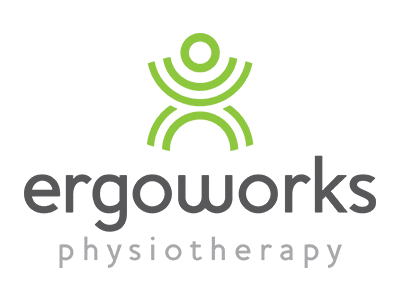How to Conduct an OHS Ergonomics Workstation Assessment in 5 Easy Steps

In today’s fast-paced work environment, businesses are more focused than ever on employee well-being and safety. One key aspect of maintaining a safe and healthy workplace is implementing effective Office Health and Safety (OHS) practices. OHS ergonomics workstation assessments are critical in ensuring employees’ workstations are designed to prevent discomfort, injury, and long-term health problems.
Ergonomics in the workplace focuses on designing tasks, equipment, and environments that enhance comfort, productivity, and overall health. A workstation properly assessed for ergonomics can significantly reduce the risk of musculoskeletal injuries, such as back pain, neck strain, and repetitive stress injuries common in office settings.
Whether you’re an employer, health and safety officer, or a business owner in Australia, conducting an OHS ergonomics workstation assessment is a proactive step to safeguard the well-being of your employees. In this article, we will guide you through the 5 essential steps to conducting a successful OHS ergonomics workstation assessment.
What is an OHS Ergonomics Workstation Assessment?
An OHS ergonomics workstation assessment involves evaluating the design and setup of a workstation to ensure it supports the health and safety of the employee. The goal is to identify potential ergonomic hazards, such as poor posture, incorrect desk height, inadequate chair support, or inadequate computer screen positioning. The assessment helps create a safer, more comfortable work environment by addressing any issues contributing to discomfort, injury, or inefficiency.
Workplace ergonomics is essential not only for physical health but also for improving productivity. By optimising how workstations are designed, employees can work more comfortably and efficiently, reducing the risk of workplace injuries and increasing job satisfaction.
Step 1: Identify the Workstation and Its Key Components
The first step in conducting an OHS ergonomics workstation assessment is thoroughly assessing the setup. Key components that need to be examined include:
- Chair: Check if the chair provides sufficient lower back support and is adjustable in height and armrests. It should allow the employee to sit with their feet flat on the ground and their knees at a 90-degree angle.
- Desk: Assess the desk for sufficient space and ergonomic height. The desk height should allow employees to keep their forearms parallel to the ground, and the monitor should be at eye level.
- Keyboard and Mouse: Ensure the keyboard and mouse are positioned so that the employees’ arms remain in a neutral position while typing. A well-positioned keyboard and mouse can reduce the strain on wrists, arms, and shoulders.
- Monitor and Screen: Evaluate the position of the computer monitor. The top of the screen should be roughly at the employee’s eye level, and it should be positioned about an arm’s length away from the user. Screen glare and reflections should also be minimised.
Step 2: Evaluate Employee Posture and Movements
Next, observe the posture and movement patterns of the employees while they work. Correct posture is a critical factor in preventing OHS-related injuries. Instruct the employee to sit in their chair and evaluate the following aspects:
- Neutral Spine: Ensure the employee maintains a neutral spine position with their back straight and shoulders relaxed. The lumbar support of the chair should support the lower back’s natural curve.
- Feet Position: The employee’s feet should rest flat on the floor, or a footrest if necessary. This helps prevent leg strain.
- Shoulder and Arm Position: The employees’ shoulders should be relaxed, and their arms should remain close to their body with elbows at a 90-degree angle.
- Neck and Head Alignment: The employee’s head should be aligned with their spine, with the monitor positioned at eye level to reduce neck strain.
Monitor employees’ movements and encourage them to take breaks regularly to change posture, stretch, and move around. The continuous use of the same posture can lead to discomfort and injury over time.
Step 3: Assess the Lighting and Environmental Factors
Lighting and environmental factors play a significant role in overall comfort and well-being in a workstation. Poor lighting or environmental conditions can strain the eyes and cause discomfort.
- Lighting: Ensure that there is adequate lighting in the workspace and that it does not cause glare on the computer screen. Desk lamps with adjustable brightness can help employees optimise their lighting to prevent eye strain.
- Noise Levels: Consider the noise level in the office environment. High noise levels can contribute to stress and distraction, reducing productivity. If necessary, consider providing noise-cancelling headphones or creating quiet zones for focused work.
- Temperature and Air Quality: An uncomfortable temperature can lead to fatigue and discomfort. Ensure the office space is well-ventilated and that the temperature is comfortable for employees to work in.
Make recommendations to improve these factors where necessary to create an optimal work environment.
Step 4: Provide Recommendations for Improvement
Once the assessment is complete, you should provide tailored recommendations for improving the workstation setup. This is where you will suggest adjustments to ensure employees’ comfort and safety, which may include:
- Adjusting Chair Height: Ensure that the chair height allows the employees’ feet to rest flat on the floor and that the chair provides adequate lumbar support.
- Repositioning Monitor: Suggest adjusting the monitor height or distance to ensure it’s at eye level and free from glare.
- Rearranging Desk Items: Encourage employees to keep frequently used items, such as their phone, pen, and notepad, within easy reach to avoid repetitive movements and strain.
- Ergonomic Accessories: Depending on the assessment, you may recommend ergonomic accessories such as an adjustable keyboard tray, wrist supports, or a footrest to promote better posture and reduce strain.
It’s important to approach these recommendations with the individual’s specific needs, as different employees may require different solutions based on their roles, body types, and preferences.
Step 5: Follow-Up and Continuous Improvement
An OHS ergonomics workstation assessment should not be a one-time activity. It’s essential to monitor the effectiveness of the changes made and ensure that the employee is comfortable with the adjustments. Follow up with employees periodically to see if they are experiencing any discomfort or if further changes are needed. Encourage employees to report any discomfort or symptoms early on so that adjustments can be made promptly.
Workplaces should also consider regular ergonomics training to educate employees about the importance of good posture, workstation setup, and taking breaks to avoid injury.
Contact Us
If you’re looking for professional guidance in improving your workplace ergonomics, consider contacting ErgoWorks Consulting. Our experts can conduct thorough OHS ergonomics workstation assessments and provide recommendations tailored to your business. Whether you’re assessing a single workstation or an entire office, we can help create a safe and comfortable environment for your employees.
For further information or to schedule an OHS ergonomics workstation assessment contact us today.


